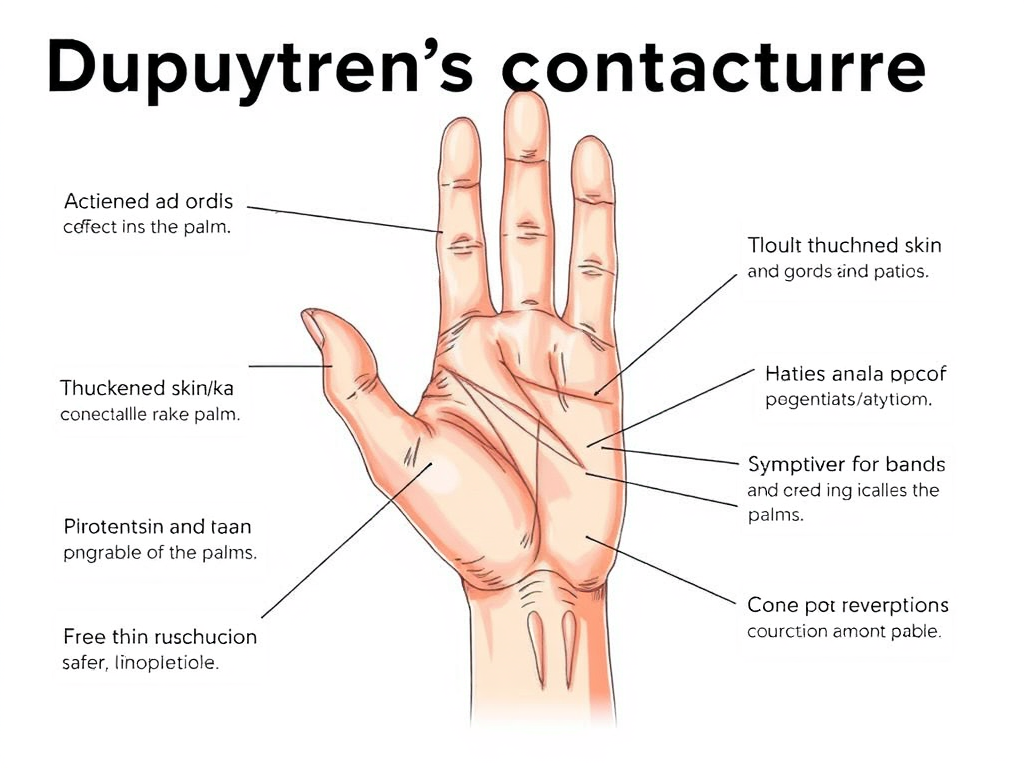Loguytren problems, often referred to as Dupuytren’s contracture, are conditions that affect the hand’s functionality. This progressive connective tissue disorder primarily impacts the palmar fascia. Understanding this condition is essential for effective management and treatment. This guide will delve deep into Loguytren problems, covering everything from symptoms and causes to treatment options and daily management strategies.
What Are Loguytren Problems?
Loguytren problems encompass a range of issues related to Dupuytren’s contracture. This condition is characterized by the thickening and shortening of the connective tissue in the palm. As the disease progresses, it can lead to finger contracture, where one or more fingers bend toward the palm and become fixed in that position.
Overview of Dupuytren’s Contracture
- Chronic Condition: It usually develops slowly over time.
- Progressive Nature: The severity can increase, leading to significant hand deformity.
- Affects Daily Life: It can hinder simple tasks like shaking hands or gripping objects.
The palmar fascia is the tissue beneath the skin of the palm. In Dupuytren’s contracture, this tissue becomes thickened and forms cords that pull the fingers down.
Symptoms of Loguytren Problems
Recognizing the symptoms early can aid in effective management. Common symptoms include:
- Thickened Skin of the Palm: A noticeable lump or nodule may form.
- Formation of Cords: Bands of tissue that pull fingers toward the palm.
- Loss of Hand Use: Difficulty performing daily activities such as typing or shaking hands.
- Painless Condition: Often, there is little to no pain associated with the initial symptoms.
- Pain or Tenderness: Some individuals may experience discomfort in early stages.
Early Detection is Crucial
Early detection of these symptoms can significantly improve treatment outcomes. If you notice any changes in your hand’s appearance or functionality, consult a healthcare professional promptly.
Causes and Risk Factors
While the exact cause of Dupuytren’s contracture remains unclear, several factors can increase the likelihood of developing Loguytren problems.
Major Risk Factors
- Genetics: A family history of the condition increases risk.
- Age: More common in individuals over 50.
- Gender: Men are more likely to develop this condition than women.
- Ethnicity: Higher prevalence among people of Northern European descent.
- Alcohol Consumption: Chronic alcohol intake may contribute to the development of the disorder.
- Diabetes: Individuals with diabetes have a higher risk of connective tissue disorders.
- Smoking: Nicotine use can worsen tissue conditions.
Fact: Genetic predisposition
Studies show that having a first-degree relative with Dupuytren’s contracture increases your chances of developing the condition by 10 to 20 times.
Diagnostic Steps for Loguytren Problems
Diagnosing Loguytren problems typically involves a straightforward process. A healthcare professional will evaluate symptoms through a physical examination.
Diagnostic Procedures
- Visual and Tactile Exam: The doctor inspects the hand for nodules, cords, and contractures.
- Tabletop Test: Patients are asked to place their hands flat on a surface. Inability to do so may indicate contracture.
- Medical History Review: Understanding family history and any associated conditions.
- Imaging Tests: Rarely necessary, but X-rays or MRIs may be used if other conditions are suspected.
Treatment Options for Loguytren Problems
While there is no cure for Loguytren problems, various treatment options can slow progression and improve hand function.
Non-Surgical Treatments
These methods are generally recommended in the early stages or when symptoms are mild.
- Steroid Injections: Anti-inflammatory medications injected into nodules can help reduce inflammation.
- Needle Aponeurotomy: A minimally invasive procedure where a needle is used to break the cords.
- Enzyme Injections (Collagenase): Enzymes dissolve the cords, allowing fingers to straighten.
Surgical Treatments
When the contractures become severe, surgical options may be necessary.
- Fasciectomy: Removal of the thickened tissue.
- Dermofasciectomy: Involves the removal of both skin and fascia, often requiring skin grafts.
- Finger Joint Fusion: In extreme cases, fusing the joint may improve alignment.
Comparative Table of Treatment Options
| Treatment Type | Description | Pros | Cons |
|---|---|---|---|
| Steroid Injections | Anti-inflammatory drugs injected into nodules | Quick relief, non-invasive | Temporary effect, not for late stages |
| Needle Aponeurotomy | Needle used to break fibrous cords | Outpatient procedure, fast recovery | High recurrence rate |
| Enzyme Injections | Collagenase to dissolve cords | Minimally invasive, effective for early stage | May cause allergic reaction |
| Fasciectomy | Surgical removal of affected tissue | Effective for severe cases | Long recovery, potential complications |
| Dermofasciectomy | Tissue and skin removed, graft applied | Lower recurrence than other surgeries | Skin grafts required, longer healing time |
| Finger Joint Fusion | Fusing of joints when necessary | Improved alignment | Loss of joint mobility |
Complications of Untreated Loguytren Problems
Failing to treat Loguytren problems can lead to serious complications.
Possible Complications
- Permanent Contracture: Fingers may become permanently bent.
- Joint Stiffness: Reduced mobility in fingers.
- Reduced Grip Strength: Difficulty holding objects or performing tasks.
- Emotional Impact: The condition can lead to psychological stress due to loss of independence.
- Skin Ulcers: Severe cases can cause ulcers in the palm due to tension.
Emotional and Psychological Impact
The emotional toll of living with Dupuytren’s contracture can be significant. Many individuals report feelings of frustration and helplessness due to their reduced hand function.
Prevention Strategies for Loguytren Problems
While there is no guaranteed way to prevent Loguytren problems, certain lifestyle choices can help minimize the risk or slow its progression.
Effective Prevention Tips
- Quit Smoking: Nicotine restricts blood flow and may worsen tissue conditions.
- Limit Alcohol Consumption: Reducing alcohol intake lowers the risk of connective tissue disorders.
- Hand Stretching Exercises: Maintain flexibility in fingers and palm through regular stretching.
- Manage Underlying Conditions: Especially diabetes and thyroid issues.
- Regular Hand Checkups: Particularly if you have a family history of the condition.
The Importance of Early Intervention
Being proactive is crucial. If you notice any lumps or difficulty extending your fingers, consult a doctor promptly. Early intervention can prevent the progression of the condition.
Daily Advice for Living with Loguytren Problems
For those affected by Loguytren problems, small changes in daily routines can make a significant difference.
Practical Tips
- Use Assistive Devices: Tools with ergonomic grips can ease the strain on your hands.
- Warm Compresses: Applying warmth can make tissues more flexible before stretching.
- Occupational Therapy: Work with a therapist to find ways to ease pressure on your hands.
- Track Symptoms: Keep a log of any changes or worsening symptoms to share with your doctor.
- Join Support Groups: Sharing experiences with others can provide emotional support.
Conclusion: Managing Loguytren Problems for a Better Life
Loguytren problems, or Dupuytren’s contracture, are not life-threatening, but they can significantly impact daily activities. Understanding the condition is the first step toward effective management.
Key Takeaways
- Awareness: The more you know about early signs, the better your ability to act before symptoms worsen.
- Timely Diagnosis: Early detection leads to more effective treatment options.
- Ongoing Self-Care: Regular monitoring and proactive management can help maintain hand function.
By integrating these strategies into your life, you can regain control and improve your quality of life. Whether considering non-surgical treatments or planning for surgery, a comprehensive understanding of Loguytren problems will empower you to make informed decisions about your health.

Catherine Frank, founder of BiblicalHorizon.com, shares daily prayers and Bible verses to nurture spiritual growth. With a lifelong passion for scripture and prayer traditions, she creates accessible spiritual content that resonates with both seasoned believers and newcomers seeking divine connection.


